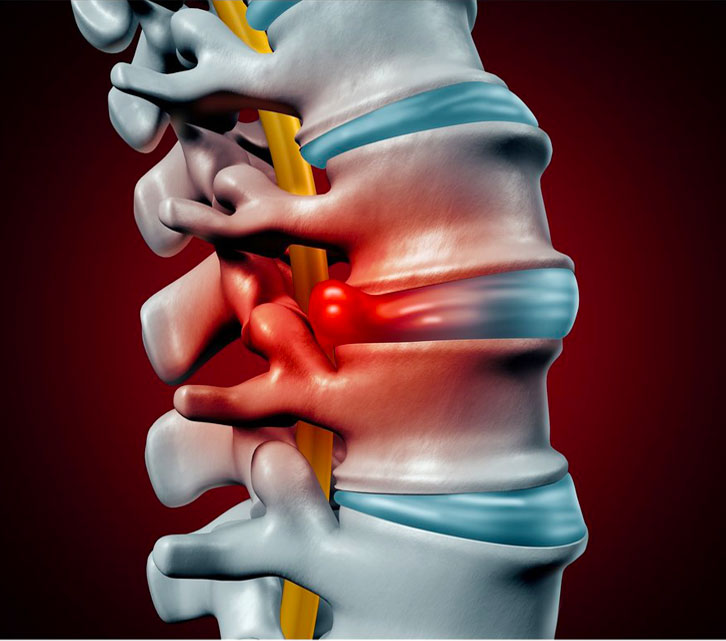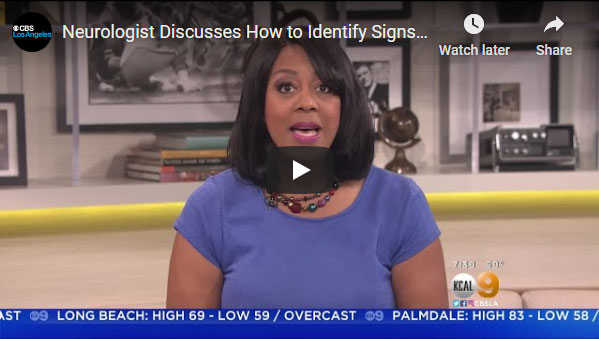Herniated Disc Overview
A spinal disc is a rubbery cushion between the individual bones of the vertebrae that stack up and make your spine. A herniated disc occurs when one of these rubbery cushions ruptures. A spinal disc is similar to a jelly doughnut because it has a tougher exterior and softer center. A herniated disc is like a jelly doughnut when the “jelly” pushes through the tougher exterior.
Some people can have a herniated disc and not even know it. At times, herniated discs can appear on the spinal images of people who do not have any symptoms or even a disc problem. Some herniated discs can cause a lot of pain. Most herniated discs will occur in the lower back, which is the lumbar spine. They can also occur in your neck, which is the cervical spine. A herniated disc can cause irritation to nearby nerves which will result in pain, numbness or even weakness in the arm or leg. Although they can be painful, many people don’t experience any symptoms from a herniated disc. Only a small number of people with herniated discs end up getting surgery to correct the problem.
Herniated Disc Specialist Los Angeles & Beverly Hills
Kyphoplasty is a less-invasive means of treating spinal compression fractures. At Yashar Neurosurgery, we ensure that we only use the most advanced methods of treatment for any spinal condition. That includes kyphoplasty.
Conservative treatment — mainly avoiding painful positions and following a planned exercise and pain-medication regimen — relieves symptoms in 9 out of 10 people with a herniated disc.
The most common signs and symptoms of a herniated disc are:
Arm or Leg Pain
If your herniated disc is in your lower back, you’ll typically feel the most intense pain in your buttocks, thigh and calf. It may also involve part of the foot. If your herniated disc is in your neck, the pain will typically be most intense in the shoulder and arm. This pain may shoot into your arm or leg when you cough, sneeze or move your spine into certain positions.
Numbness or Tingling
People who have a herniated disc often experience numbness or tingling in the body part served by the affected nerves.
Weakness
Muscles served by the affected nerves tend to weaken. This may cause you to stumble, or impair your ability to lift or hold items.






Cervical Disc Herniation
The most common signs and symptoms of a cervical herniated disc are:
Arm pain
A cervical disc herniation can often cause pain in the neck, shoulder, arm, and even into the hand. The pain will typically be most intense in the shoulder and arm. This pain can often be described as burning, aching, or stabbing. Occasionally an adjustment in positioning of the spine can also exacerbate or alleviate these symptoms.
Numbness or tingling
People who have a herniated disc often experience numbness or tingling in the arm or hand in the territory affected by the nerve involved.
Weakness
Muscles served by the affected nerves also have the potential to be weakened. This may cause impairment in the patient’s ability to lift or hold items, or to write.
Schedule an appointment with Dr. Yashar if your pain travels down your arm, or if it’s accompanied by numbness, tingling or weakness. Surgical options for Cervical Disc Herniation include ACDF and Cervical Foraminotomy.
Thoracic Disc Herniation
The most common signs and symptoms of a thoracic herniated disc are:
Body or Leg pain
A thoracic disc herniation can often cause pain into one or both legs.
Spasticity
Reflexes in one of or both legs can be increased which could lead to spasticity, or continuous muscle contraction in the legs.
Numbness Or Tingling
People who have a herniated disc often experience numbness or tingling in the buttock or leg, in the territory affected by the nerve involved.
Weakness
People who have a herniated disc often experience numbness or tingling in the buttock or leg, in the territory affected by the nerve involved.
Bladder Or Bowel Function
A herniated thoracic disc can also affect and change one’s bladder or bowel function.
Schedule an appointment with Dr. Yashar if your pain travels down your leg, or if it’s accompanied by numbness, tingling or weakness or falls. Surgical options for Thoracic Disc Herniation can include microdiscectomy and lumbar decompression/laminectomy or more depending on your assessment with Dr. Yashar.
Lumbar Disc Herniation
The most common signs and symptoms of a lumbar herniated disc are:
Leg pain
A thoracic disc herniation can often cause pain into one or both legs.
Spasticity
A lumbar disc herniation can often cause pain in the buttock, leg and even into the feet and toes. The pain will typically be most intense in the buttock and upper leg. This pain can often be described as burning, aching, or stabbing. Occasionally an adjustment in positioning of the spine can also exacerbate or alleviate these symptoms, as well as coughing, sneezing or sitting.
Numbness Or Tingling
People who have a herniated disc often experience numbness or tingling in the buttock or leg, in the territory affected by the nerve involved.
Weakness
Muscles served by the affected nerves also have the potential to be weakened. This may cause impairment in the patient’s ability to walk or stand, potentially leading to stumbling.
Schedule an appointment with Dr. Yashar if your pain travels down your leg, or if it’s accompanied by numbness, tingling or weakness or falls. Surgical options for Lumbar Disc Herniation include microdiscectomy, lumbar decompression/laminectomy, ALIF, PLIF, DLIF, and XLIF.
Are You at Risk?
Factors that may increase your risk of a herniated disc occurring are:
- Being overweight puts more stress and pressure on the discs in your lower back.
- People who do a lot of physical work are more likely to develop back problems. All of the repetitive pulling, lifting, pushing and other physical activities can increase your risks of developing a herniated disc.
- Your age is a major risk factor because as we get older, our body goes through natural wear and tear which affects the spinal discs.
Causes
Disc degeneration, which is the natural wear and tear, is the result of the aging process. As you become older, your spinal discs lose some of their water content resulting in a less flexible cushion that is more susceptible to tears and ruptures.
It is difficult to say exactly what the cause of a herniated disc is. When lifting a heavy object, it is important to lift safely with your leg and thigh muscles rather than your back muscles. Often people will forget or become careless and lift with their back. Twisting and turning while lifting a heavy object can also put pressure on a spinal disc. This action may cause a herniated disc. It is not very common for a fall to cause a herniated disc but it is still possible.
Treatment of Herniated Disc
Herniated discs are usually treated with a conservative method of planned exercise regimens and pain medication. Surgery for a herniated disc is not common because with the correct conservative method, the issues should be solved.
If you have been experiencing pain that you think could be from a herniated disc, do not hesitate to seek medical attention and relieve your symptoms. Dr. Yashar is committed to providing compassionate care and empathy to all of his patients. He treats each patient individually, providing them with the necessary tools to direct their own care, and guiding them through each step of the treatment process. This not only includes surgical options–but non-surgical strategies as well. You can schedule an appointment here today.
I REALIZED THAT DR. YASHAR GENUINELY CARES TO CURE HIS PATIENT, WHICH MAKES HIM AN EXCEPTIONAL DOCTOR IN THE CITY.



